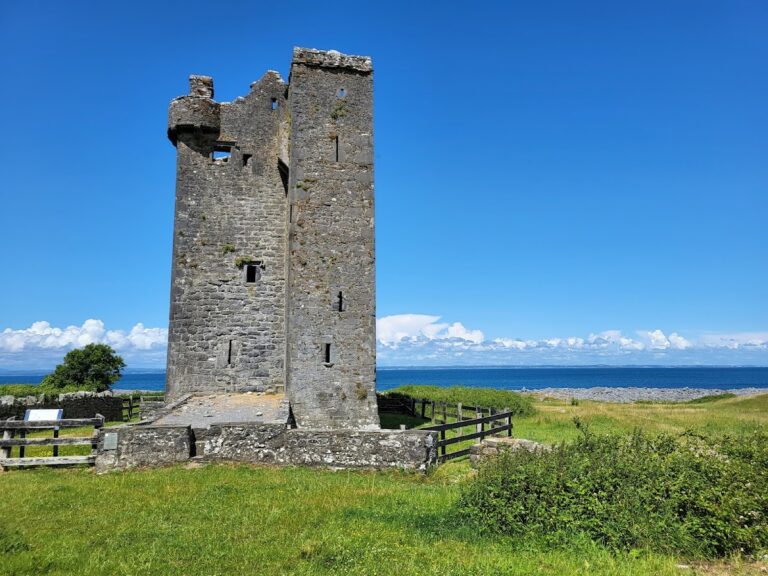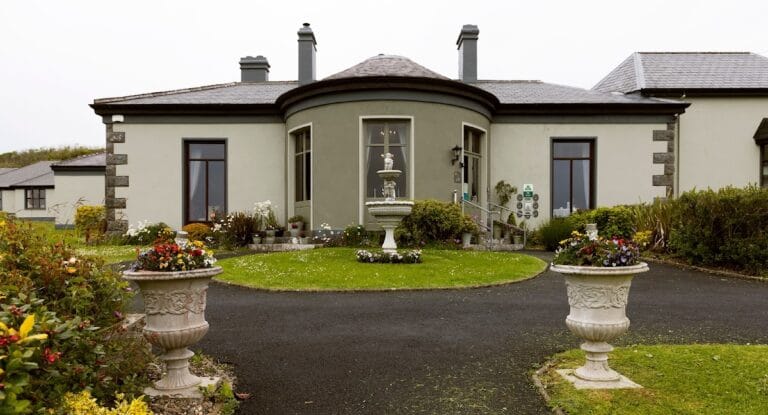Shanmuckinish Castle: A 15th-Century Tower House in County Clare, Ireland
Visitor Information
Google Rating: 4.2
Popularity: Low
Google Maps: View on Google Maps
Country: Ireland
Civilization: Unclassified
Remains: Military
History
Shanmuckinish Castle is a ruined tower house situated near Ballyvaughan in County Clare, Ireland. It was constructed in the 15th century by the Gaelic Irish, reflecting the local tradition of building fortified residences during that period. The castle’s name, Shanmuckinish, derives from the Irish “Sean,” meaning old, which distinguishes it from a nearby castle of the same “Muckinish” name erected just three years later. This suggests a sequence in the creation of these two strongholds in close proximity.
The castle’s ownership over the centuries is complex, partly due to the similarity of its name with the adjacent Muckinish Castle. Historical records hint that Shanmuckinish Castle may have also been referred to as Ballynacragga Castle, linking it to the MacNamara family. This family reportedly took up residence here after being forced from their original Ballynacragga Castle near Dromoland Castle in 1654, during a period of upheaval in Ireland. Besides the MacNamaras, the O’Loghlen, Neylon, and Blake families also inhabited the castle into the 19th century, indicating its continued use as a dwelling for various local families well beyond its medieval origins.
The castle fell into ruin at some point, but significant repairs were carried out around 1836. By the late 19th century, specifically in 1897, it was still considered suitable for habitation. This enduring use underscores its structural resilience and the value placed on the site through different eras, despite broader changes in Irish society and governance over the centuries.
Remains
Shanmuckinish Castle stands as a free-standing tower constructed in a roughly square shape, typical of Irish tower houses built around the mid-15th century. Made primarily from rough stone rubble, this structure originally rose to nearly 17 meters in height, a stature it mostly retains despite partial collapse. These fallen sections expose interior floors, offering clear views of the castle’s construction and layout.
Defensive features are evident, especially on the lower floors where narrow slit windows, known as loop windows, provided secure vantage points for archers or watchers. In contrast, the upper floors contain larger windows intended more for light and appearance, suggesting a balance between defense and comfort. Though the staircases have not survived, traces of stairwells and passages built within the walls remain visible. The castle also features two vaulted ceilings—arched stone ceilings that support upper stories and add strength—helping to mark original interior divisions.
Encircling the tower is a bawn, a defensive wall forming a courtyard space. This structure has been notably well preserved, largely due to repair efforts carried out in the eighteenth and nineteenth centuries. Defensive architectural elements atop the tower include a wall walk, allowing guards to patrol the battlements, and machicolations, which are openings in the parapets through which defenders could drop stones or other objects on attackers. Although the castle originally had four such features, two still stand today.
Inside, the first-floor reception room was designed with domestic comfort in mind. It contains a large fireplace set within the west wall, an essential source of heat and a center for household activities. Some of the original wall rendering—smooth plaster applied to the stone walls—also survives here, offering glimpses of the interior’s finished appearance during its period of use.
Together, these features illustrate how Shanmuckinish Castle evolved as both a fortress and a residence, reflecting changes in defense needs and living standards across several centuries.










